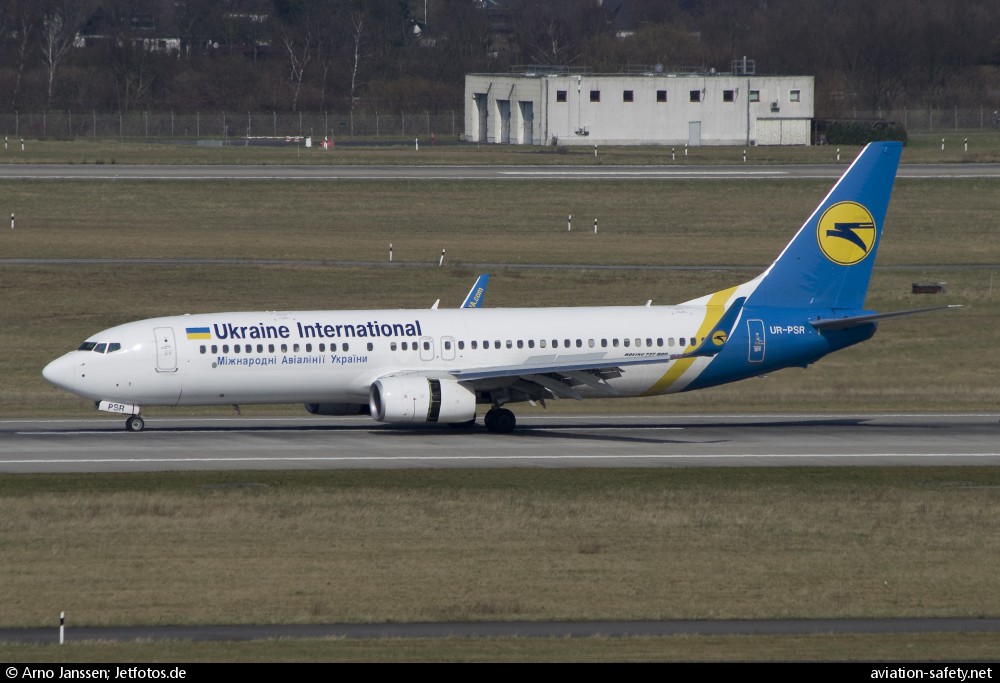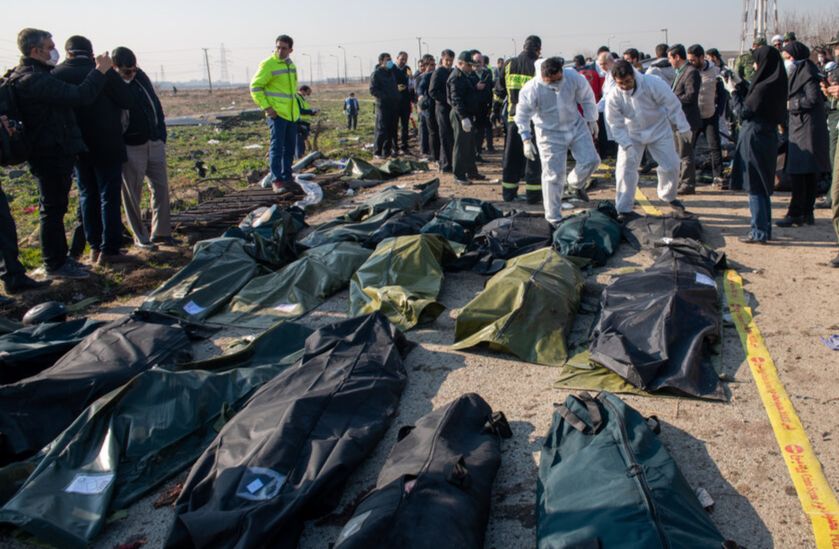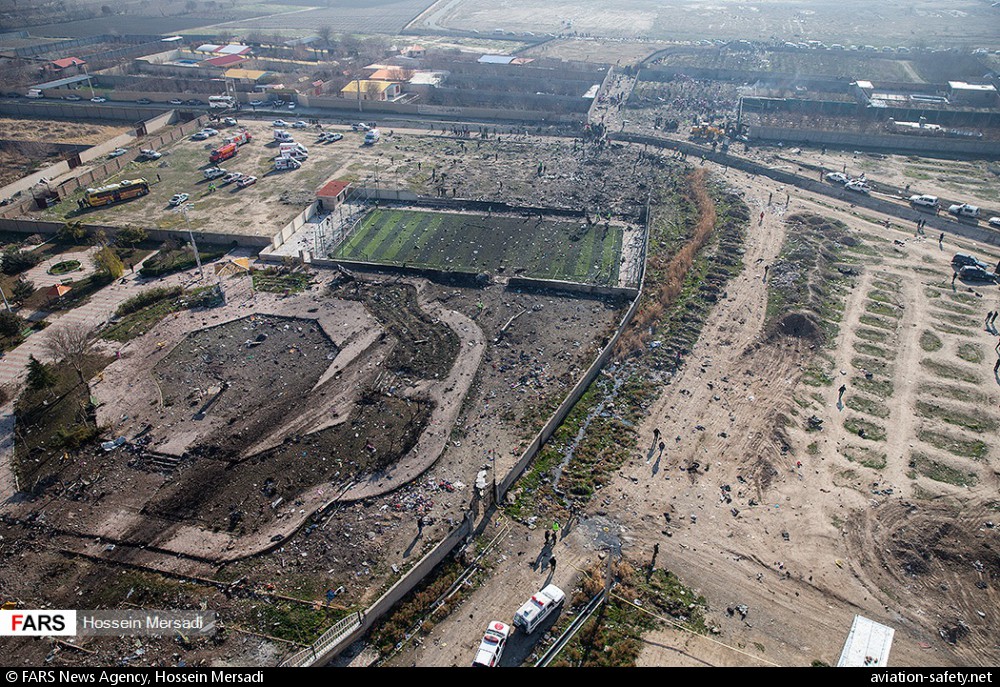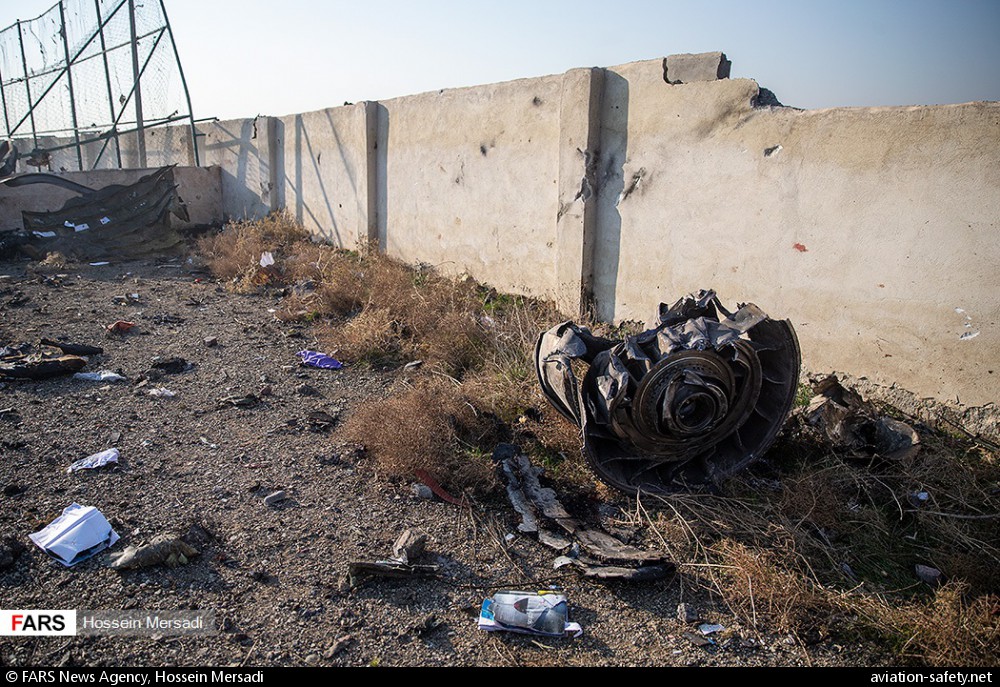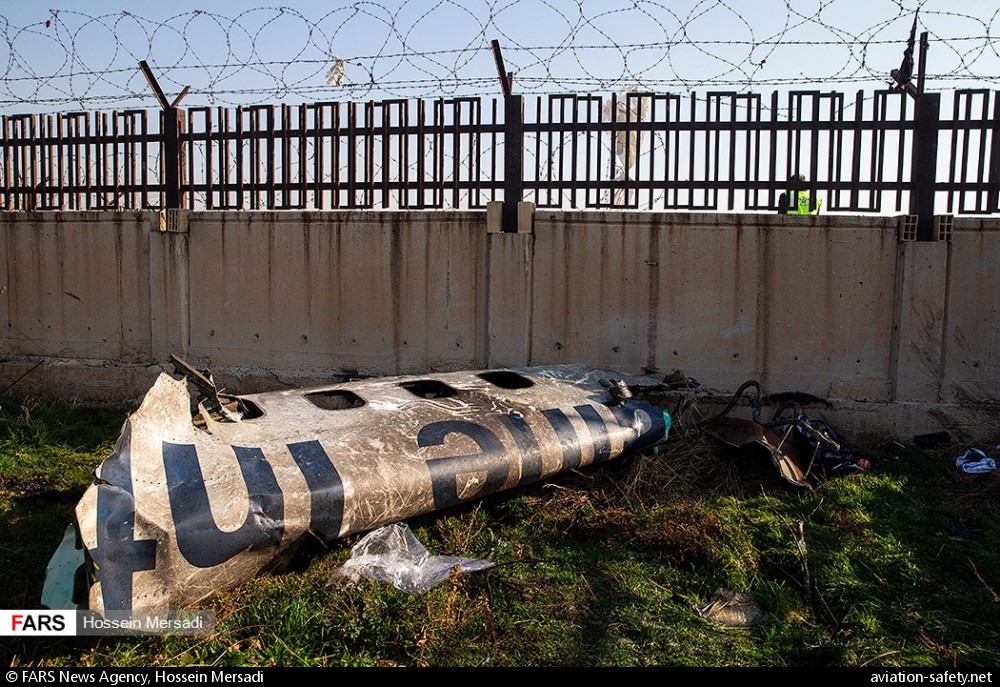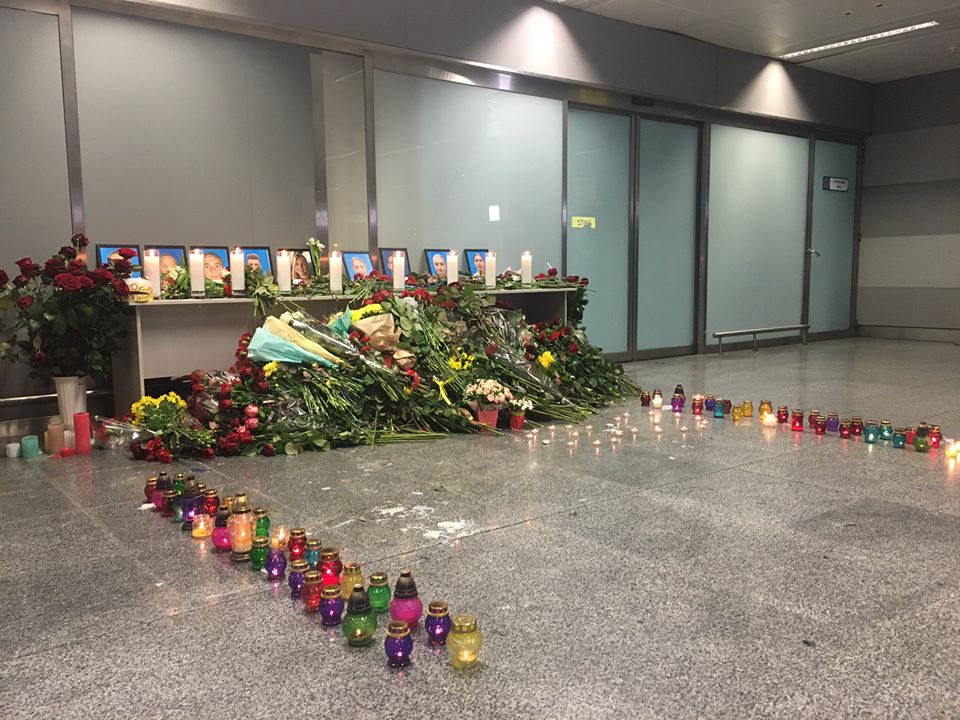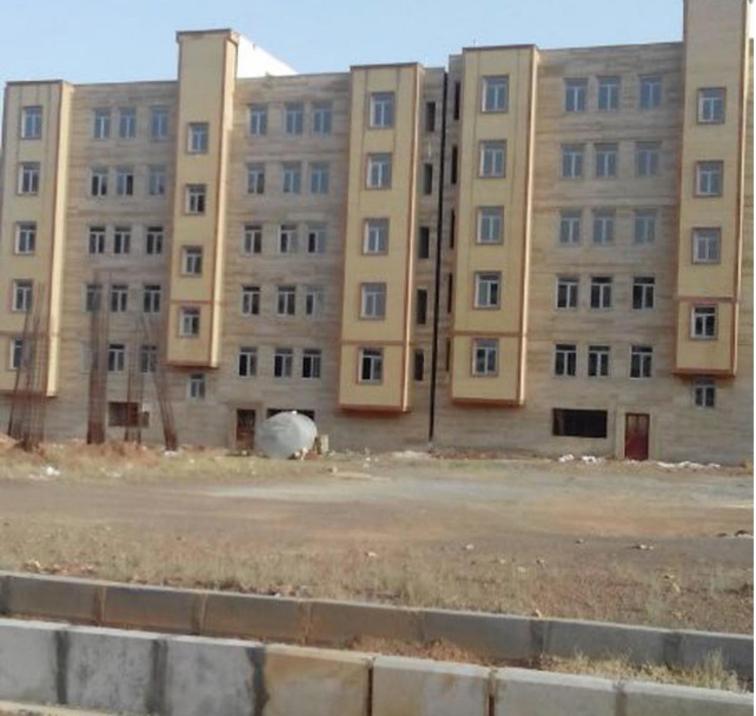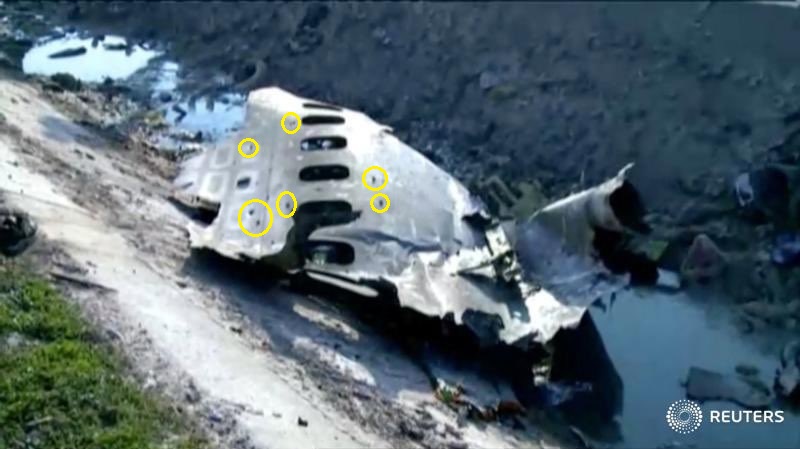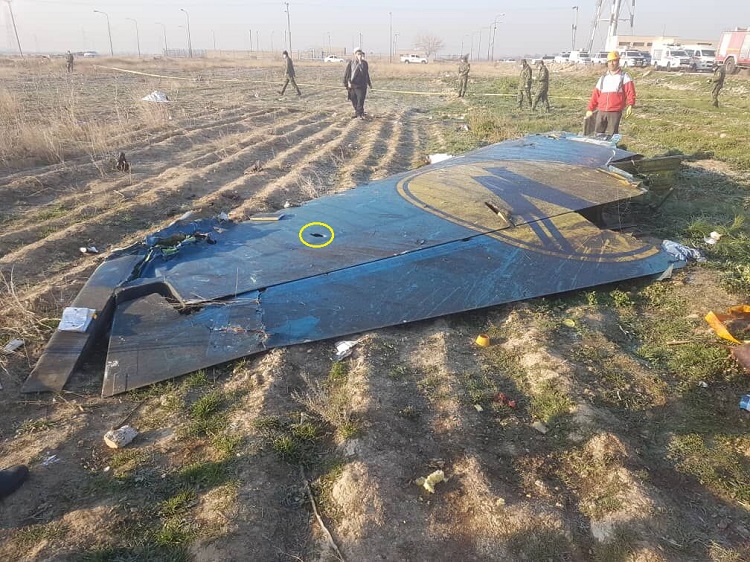The US officials state that an anti-aircraft missile could have caused the crash, open-source data back this claim while Iran denies it. Meanwhile, Ukrainian President Volodymyr Zelenskyy has abstained from making definite statements and Ukrainian experts rule out engine failure in the Iran crash.
According to Ukrainian FM Vadym Prystaiko, two passengers and all nine crew members were Ukrainian nationals, among other passengers were 82 Iranians, 63 Canadian citizens, 10 Swedes, four Afghan citizens, three German, and three British nationals. However, the German Foreign Ministry denied that any Germans were on board saying that the three mentioned people were asylum seekers. 138 of the 167 passengers were traveling to Canada via Ukraine.
Many of the passengers were dual citizens who used their Iranian passports exiting the country, which is why Iran stated that at least 130 passengers were Iranian nationals.
Late on 8 January, 45 representatives of various Ukrainian agencies departed to Iran to be involved in the investigation into the crash, identification and repatriation of the bodies of Ukrainians killed in the crash.
Engine malfunction vs surface-to-air missile strike
Ukraine International Airlines had no fatal accidents in its operating history since 1992. The flight crew comprised three experienced pilots. The plane was a 2.5-year-old Boeing 737-8KV that came directly from the manufacturer in 2016. According to UIA, the plane was inspected just two days before the crash. And the 737-800 is generally considered to have a good safety record.
The final ADS-B telemetry data received less than three minutes into the flight showed that the plane was climbing and gained an altitude of 2416 meters above sea level (1410 meters above ground level) at the speed of 509 km/h.
An initial Iranian report mentioned that eyewitnesses saw the plane was in flames before it collided with the ground. The Ukrainian embassy in Tehran blamed engine failure and excluded the possibility or a terror or missile attack, but later retracted the initial statement. The Iranian Disaster Mitigation and Management Organization preliminarily attributed the crash to a technical issue in the engine.
#Breaking First footage of the Ukrainian airplane while on fire falling near #Tehran pic.twitter.com/kGxnBb7f1q
— Ali Hashem علي هاشم (@alihashem_tv) January 8, 2020
One more video captured the crash from another angle:
Meanwhile, western officials have stated that the plane was shot down.
On 9 January, US President Trump suggested that the shooting down of the plane was the result of “a mistake on the other side” while unnamed US officials source stated that American intelligence picked up signals of a radar being turned on and satellites detected two surface-to-air missiles launch shortly before the plane exploded.
Canadian Prime Minister Justin Trudeau called for a thorough investigation and said,
“We have intelligence from multiple sources, including our allies and our own intelligence; the evidence indicates that the plane was shot down by an Iranian surface-to-air missile. This may well have been unintentional.”
British PM Boris Johnson said that there is a “body of information” to suggest an Iranian surface-to-air missile brought down a Ukrainian airliner.
Iranian officials denied that one of their missiles downed the Ukrainian passenger plane. Russian deputy Foreign Minister Sergey Ryabkov has supported Iran by stating there are no grounds to blame the country for the crash.
President Zelenskyy has so far refrained from any definite statements and called on western countries to share their data on the disaster.
“The missile version is not ruled out, but has not been confirmed to date. Given the recent statements by the leaders of states in the media, we call on all international partners – first of all, the governments of the United States, Canada, and the United Kingdom – to provide data and evidence regarding the disaster, at the disposal of the investigative commission,” Zelenskyy wrote in a Facebook post on 10 January.
The Security Service of Ukraine (SBU) follows two top-priority lines of inquiry: missile hit and terror attack. However, SBU chief Ivan Bakanov said,
“Really, the operational assumption on the missile of the air defense complex Tor draws most of the public attention. But it’s enough to open the missile system’s operational manual to have a string of questions raised, that require additional answers. Particularly, it is about the operational range of the missile, nuances of guiding the complex and so on.”
Bakanov’s note on the Tor’s operational range sounds strange since its standard 9М330 missile can hit targets 1.5-12 kilometers away at the altitudes between 0.01 and 6 kilometers. The plane was perfectly within the hit range flying about 1.5 km above the ground and about 6 km away from the missile base.
Ukraine to establish international commission
Speaking at a briefing on 10 January, Ukrainian Foreign Minister Vadym Prystaiko announced that Ukraine wants to create an international coalition to investigate the reasons of the crash of the Ukrainian airliner. Prystaiko stressed that all versions are being considered. He named representatives of Canada and other nations, as well as representatives of Boeing and the French company which produced the engines among the participants of this commission. He assured that Iran had stated it would “allow everyone to participate in this working group.”
Meanwhile, Ukraine’s Prosecutor General’s Office has stated in a Facebook post that measures are being taken to organize the joint work of investigators of the countries whose nationals had been killed in the disaster to establish its causes.
Ukrainian experts working on the ground dismiss engine failure version
During his briefing, Prystaiko said that some 50 Ukrainian representatives have departed to Iran.
“They are trying to reconstruct the plane to understand what happened to it, with technical means. We are getting full cooperation from the Iranian side. The Iranian side is helping us, we have access to both the aircraft details and the crash site. The police is ensuring the safety of the location. However, locals had access to it from the outset, which complicated the investigation.”
Prystaiko stated that the Ukrainian team was given access to the black boxes and recordings of conversations between flight operators in the Tehran airport and the Ukrainian pilots.
One of the results of the work of the Ukrainian team, which includes members of the Ministry of Interior, Ministry of Infrastructure, State Aviation Service, State Security Service, and other state institutions, had been voiced by Zorian Shkiriak, advisor to Ukrainian Minister of Interior. Speaking on air of Hromadske Radio, he stated that the version about an engine ignition and a technical malfunction have been “definitely ruled out.”
Photo and video evidence
A few hours before the plane crashed, Iran launched a ballistic missile attack on US military targets in Iraq in retaliation for the killing of Qassim Suleimani. Of course, Iranian air defense would have been on high alert expecting an American air attack in reply to the Iranian strike and the fact that the take-off of UIA’s Boeing was delayed by one hour could contribute to mistaking the civil airliner for a military target.
One of the videos that emerged on social media showed what appears to be a missile strike on aircraft mid-air. The New York Times published it highlighting that it verified the video and that it’s showing “the moment a Ukrainian airliner was hit in Iran.”
Meanwhile, Bellingcat geolocated the video to a residential area to the west of Khomeini Airport:

An Iranian missile base is located just six kilometers northwest from the estimated hit area, matching the suspected direction of the strike. Journalist Julian Röpcke of BILD discovered that satellite imagery dated November 2019 shows an object in one of the trenches at the base which could be a Tor-M1 radar vehicle:

Crash impact area can be seen on a Sentinel-2 image from today pic.twitter.com/OmYVGdEwB6
— Gennadii Donchyts (@gena_d) January 8, 2020
Nose cone of the missile
Shortly after the PS752 crash on 8 January, photographs emerged on social media showing the nose cone of the 9M330 missile that is fired by the Russian Tor M-1 surface-to-air missile system. BILD found a photo of a street in Parand, Tehran suburb where the UIA jetliner crashed, showing the same curb structure as in the photographs of the missile part:
Such missile parts were spotted on multiple occasions in various Ukrainian cities located in the occupied parts of the Donbas. For example, such a nose cone was found in February 2016 in Luhansk after the night reports on an air explosion heard in southern and southwestern neighborhoods of the city earlier on the same day:
#Luhansk #Yuzhnyi block @LUGANSK_TODAY Part of AA missile, tried to shoot down some US satellite? https://t.co/iJPDr9FqO7
— English Luhansk (@loogunda) February 16, 2016
In 2007, Russia delivered 29 Tor-M1 self-propelled short-range surface-to-air missile systems to Iran.
Suspected projectile holes
Aviation risk-monitoring group OPS said in their statement,
“We would recommend the starting assumption to be that this was a shootdown event, similar to MH17 – until there is clear evidence to the contrary,” asserting that photos of the plane debris “show obvious projectile holes in the fuselage and a wing section.”
Destroying the evidence?
On the morning of 10 January, Bellingcat founder Eliot Higgins informed about multiple reports from those having access to the crash site that the wreckage has been bulldozed “making a truly forensic investigation next to impossible.” The CBS report confirms that plane wreckage was removed:
CBS crew just visited the #Ukrainian airlines crash site west of Tehran. Nine am local time. Virtually all pieces of the plane were removed yesterday – say locals. Scavengers now picking site clean. No security. Not cordoned off. No sign of any investigators. pic.twitter.com/hhNJyokhjq
— Elizabeth Palmer (@CBSLizpalmer) January 10, 2020
However, 10 January drone footage shows that the entire territory hasn’t been fully cleaned up:
https://twitter.com/VOANews/status/1215726625440116737
While the investigation is underway, it is too early for final conclusions, however, some pieces of evidence show that the assumptions that Iran shot down the Ukrainian International Airlines flight 752 are not groundless.
Update 11 January, 06:00:
Iran admits that it shot down the Ukrainian airliner. In a statement aired on Iranian state TV, Iran’s military has said that it “unintentionally” shot down the passenger jet due to “human error,” promises to hold those accountable responsible.
While admitting Iran’s guilt, Iranian FM Javad Zarif still blames “US adventurism”:
https://twitter.com/JZarif/status/1215847283381755914
Read also:
- Major European low-cost airlines to revolutionize Ukrainian air passenger market
- Ukrainian airline industry booms as low-costers keep coming in
- JIT charges four suspects over downing MH17, Bellingcat identifies eight more
- Lords of the skies


